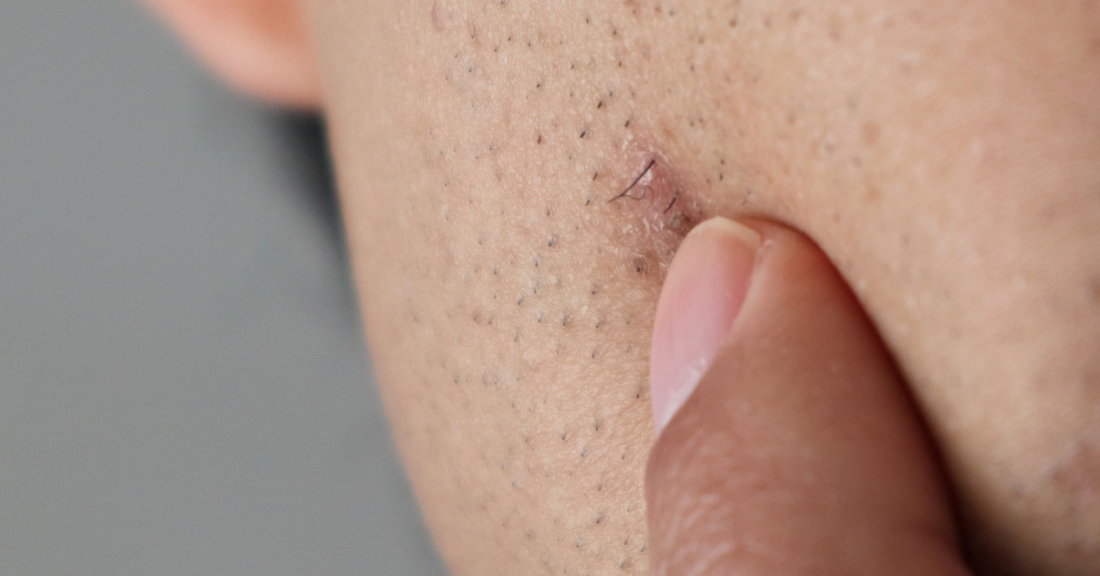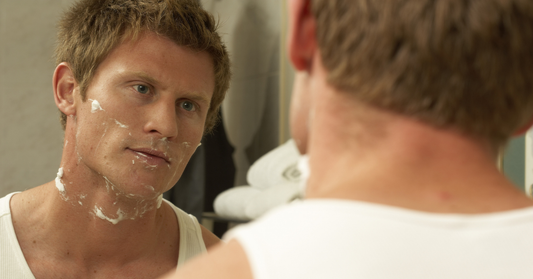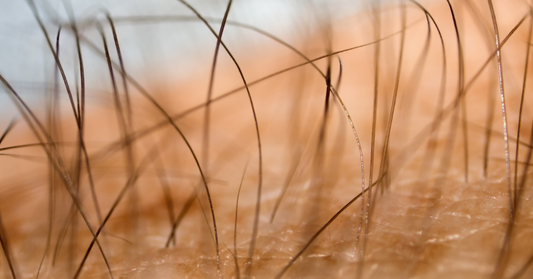
Ingrown Hairs: The Silent Threat in Men’s Grooming
Think a mate would love this? Share it.
OPINION
Are You Grooming Properly — or Creating a Skin Problem You Didn't Expect?
🖊️ Written by The Nutsmate Team | ⏱️ 5 min read
You’ve followed your grooming routine to the letter. Trimmed the chest, tidied up downstairs, and applied your aftercare like a pro. Everything feels clean and smooth — until the next morning, when you spot it. A red, irritated bump, maybe tender to touch. Sound familiar?
That’s an ingrown hair — one of the most common (and frustrating) side effects of shaving and trimming, and yet one of the least talked about among men.
What Are Ingrown Hairs — and Why Do They Happen?
Ingrown hairs happen when a shaved hair fails to break through the surface of the skin and instead curls back and grows inward. This often leads to inflammation, redness, small pus-filled bumps, and even discomfort or infection if left untreated.
They can occur anywhere on the body where hair is removed — the neck, chest, underarms, and particularly the groin area. Men with coarse or curly hair are more prone to the issue, but let’s be honest — if you shave or trim, it’s not a matter of if, but when.
Why It Matters
Aside from being annoying, ingrown hairs can interfere with your grooming confidence. They can also lead to skin discolouration, scarring, or more serious infections if you pick at them or use incorrect methods to “fix” them.
And let’s clear this up: dealing with ingrowns isn’t about being vain. It’s about skin health. And if you’re putting blades near sensitive areas, it’s worth understanding what you’re doing to your skin.

How to Prevent Ingrown Hairs (Backed by Logic, Not Hype)
No miracle products. No unproven hacks. Just practical habits that work:
1. Avoid shaving too close to the skin
Going ultra-smooth might seem like the gold standard, but the closer the cut, the higher the risk of hairs curling inward. Consider using a precision trimmer that leaves a tiny bit of length — just enough to reduce irritation without compromising a clean look.
2. Exfoliate regularly
Dead skin cells clog pores and trap hairs. A gentle body scrub 2–3 times a week helps remove buildup and lets new hair grow out freely. For high-risk areas like the groin or neck, use a mild exfoliant suitable for sensitive skin.
3. Use high-quality tools
Dull blades and cheap razors are a recipe for trauma to the skin. Use a trimmer with ceramic blades and ergonomic design for better control and reduced friction. It’s a simple upgrade that makes a world of difference.
4. Apply a soothing post-grooming product
Skip the alcohol-based aftershaves — they can inflame and dry out your skin. Instead, go for balms or gels with calming ingredients like aloe vera, witch hazel, or chamomile.
⚠️ Important: If an ingrown hair becomes increasingly painful, swollen, or shows signs of infection (such as pus or spreading redness), don’t ignore it. See your GP or a dermatologist. Proper treatment is always better than waiting it out.
Final Thought: Grooming Is About Maintenance, Not Damage
Good grooming should leave you feeling fresh and confident — not dealing with irritation, discomfort, or skin issues. If you’re regularly seeing ingrown hairs, it’s a sign to pause and re-evaluate your technique, your tools, and your aftercare.
At MateTalks, we’re not here to sell grooming perfection. We’re here to talk about what actually works, openly and practically. Because looking after yourself shouldn’t be complicated — but it should be smart.
🎯 Ready to Own Your Style?
Discover the Nutsmate Groin & Body Hair Trimmer — engineered for power, comfort, and total control. Whether it’s chest, back or beyond, it’s your body. Groom it your way.




